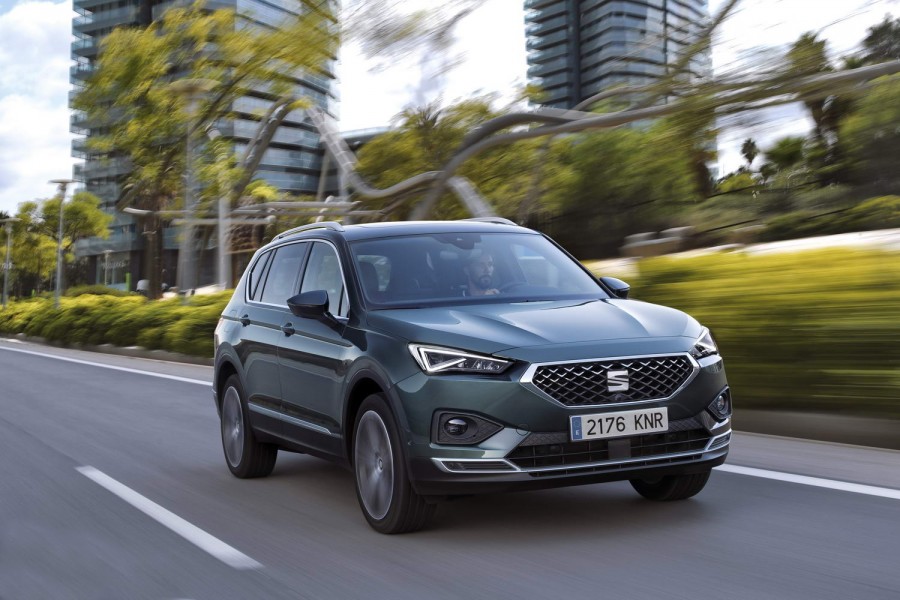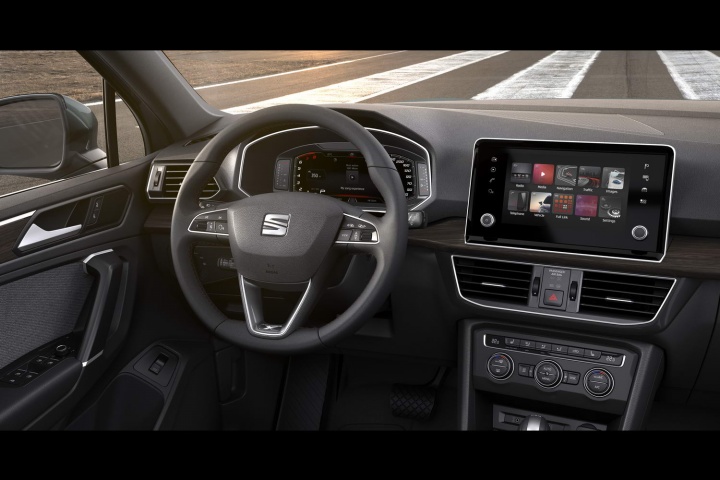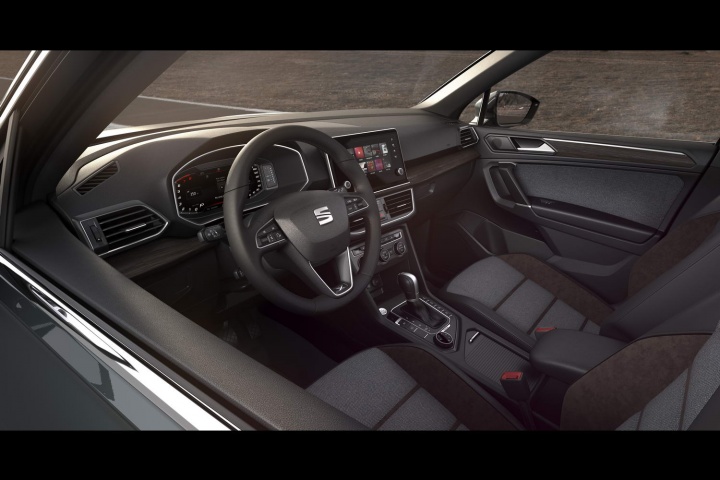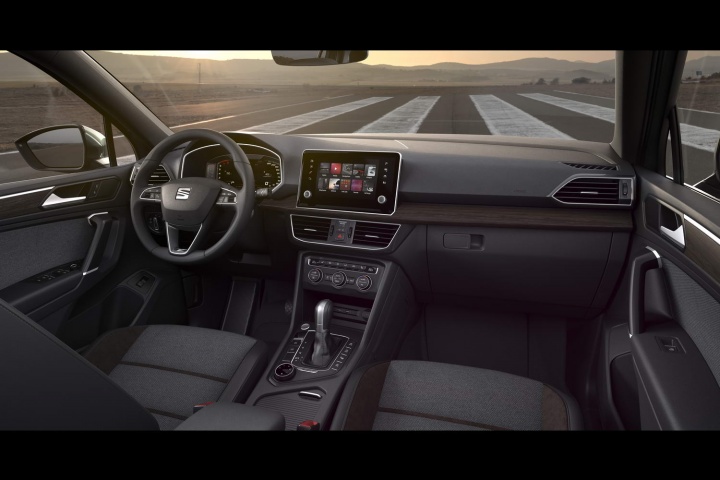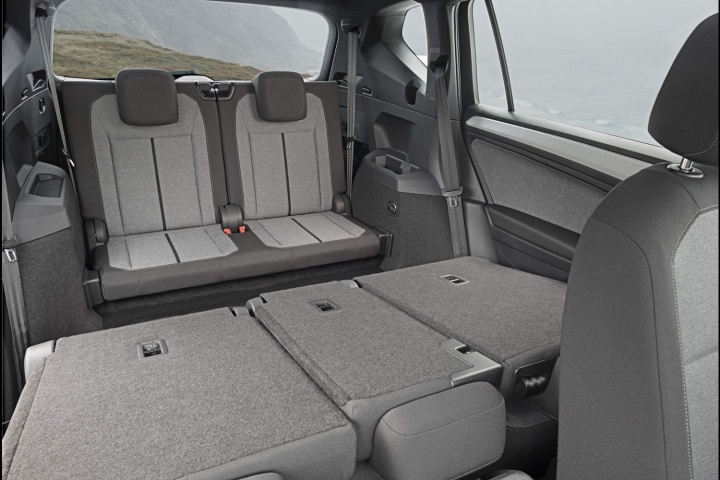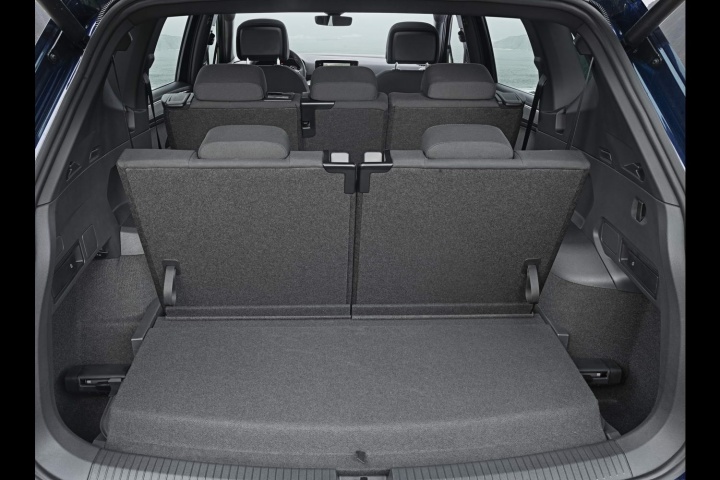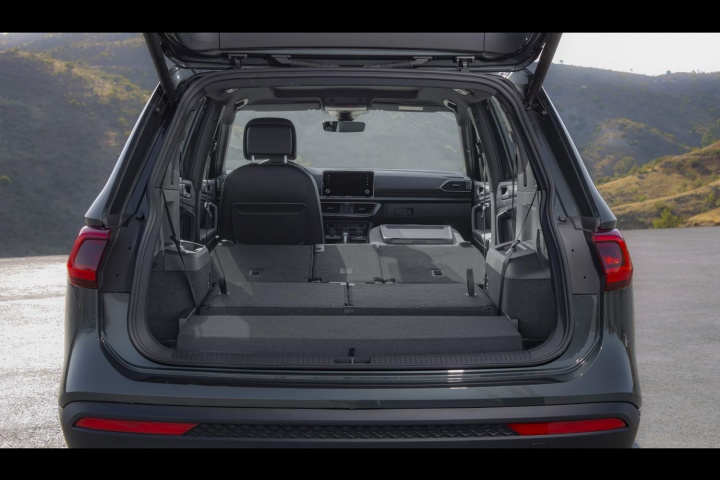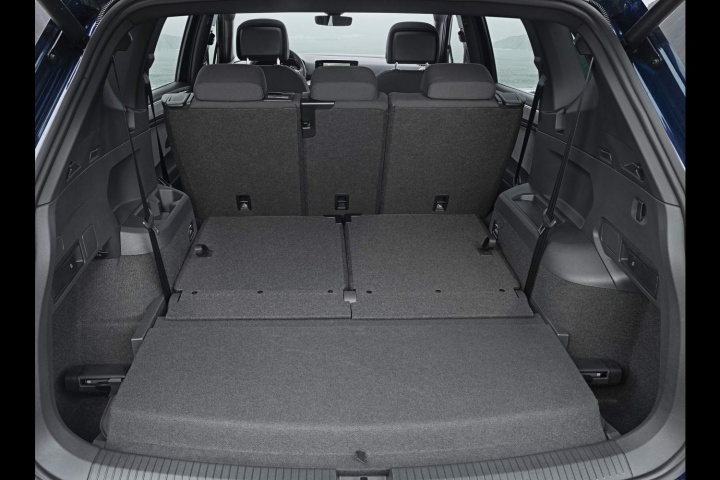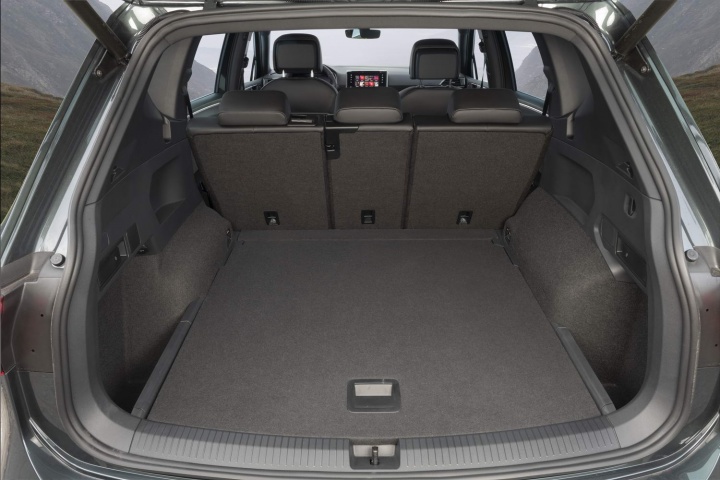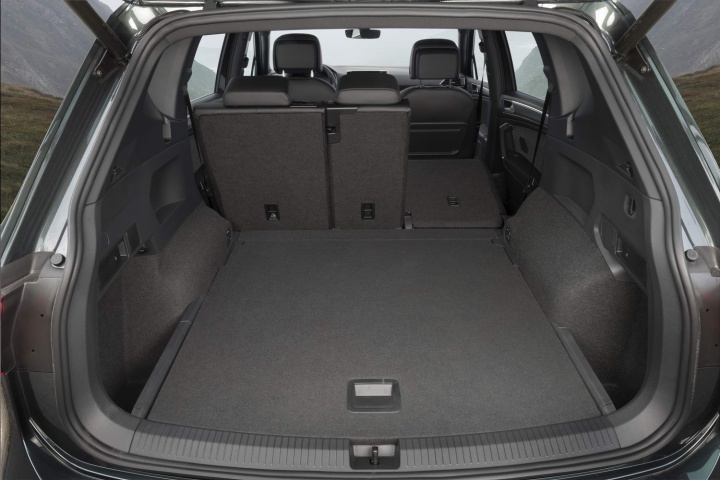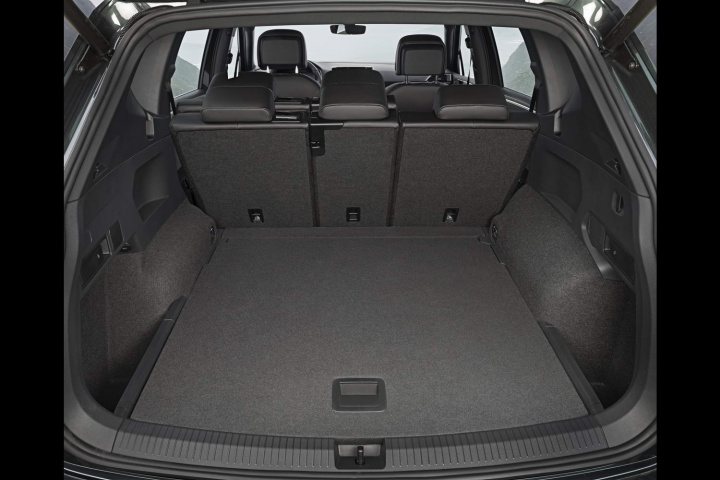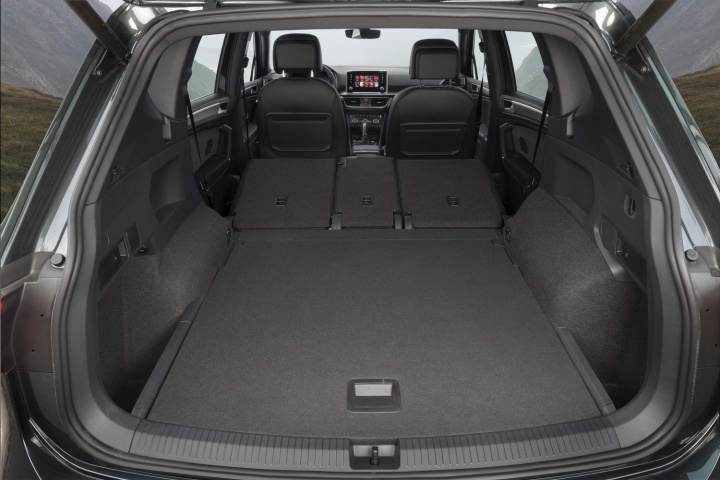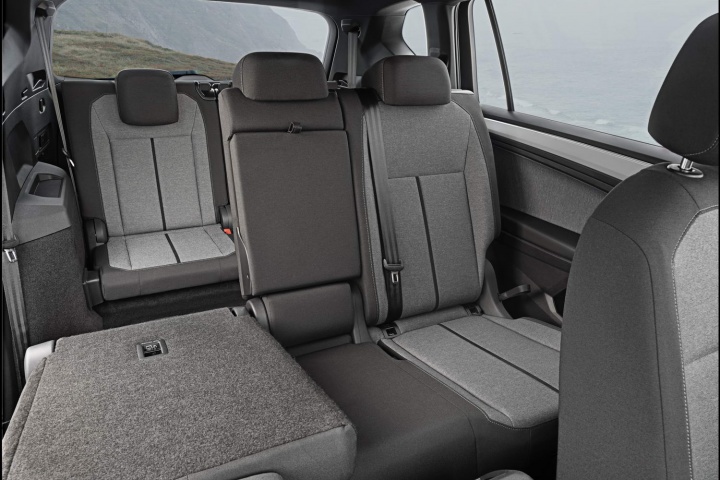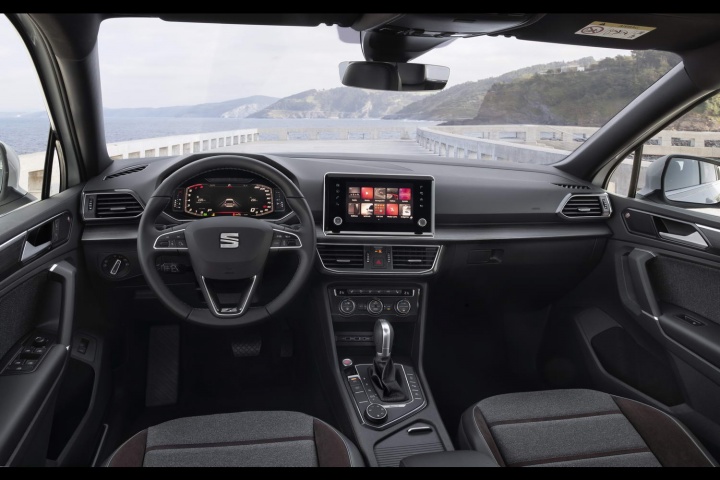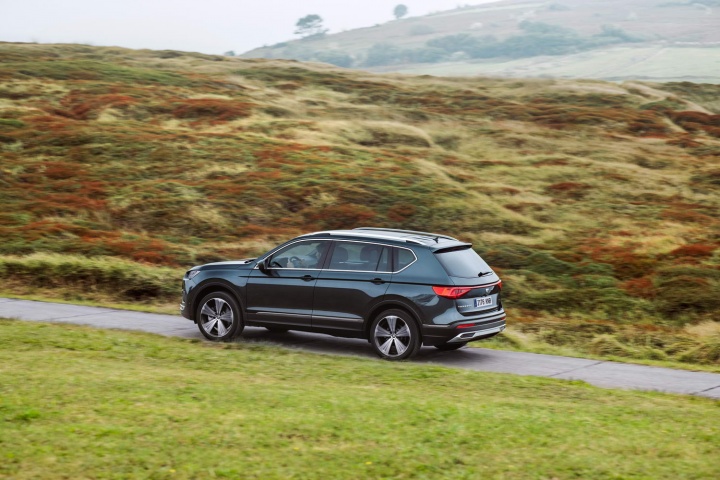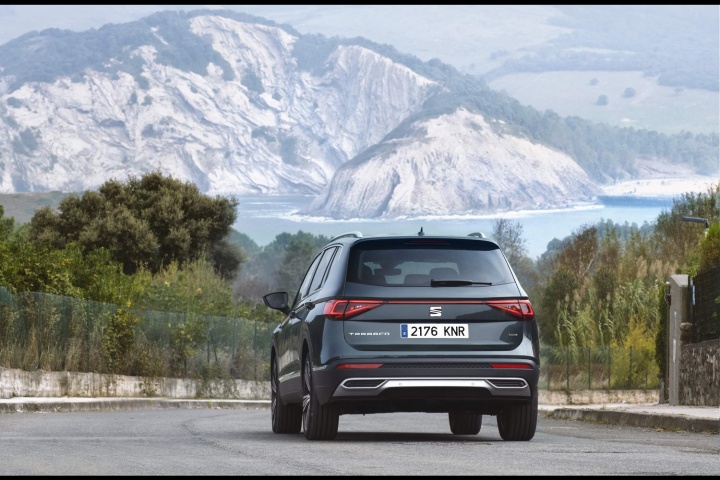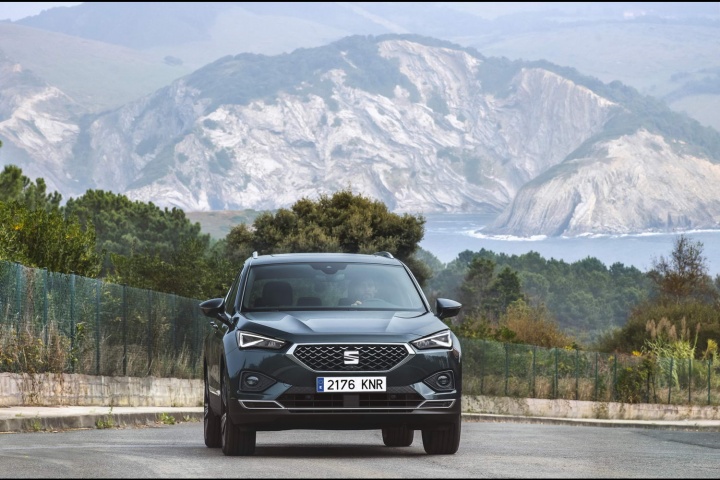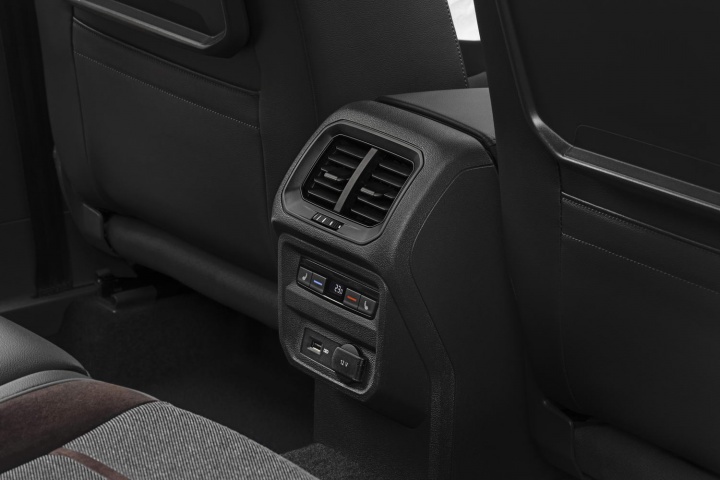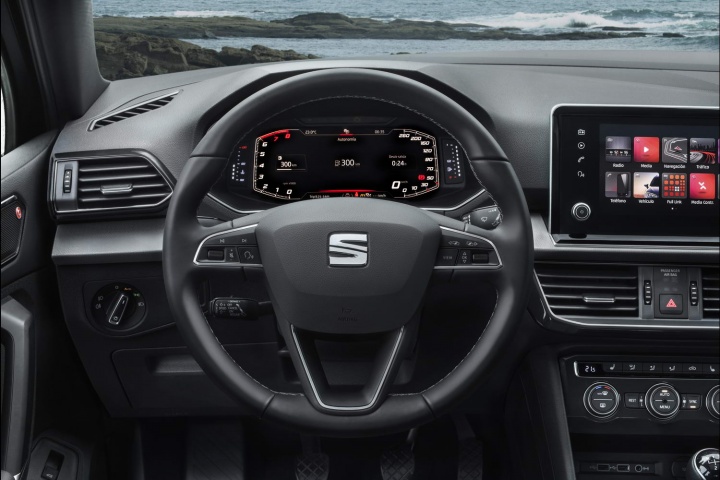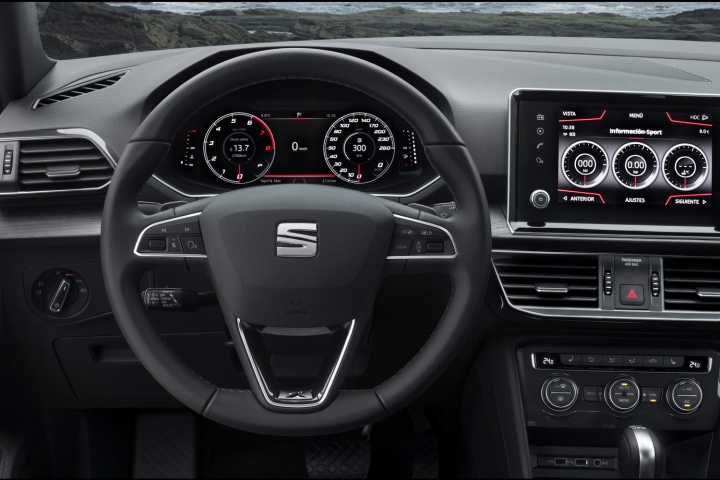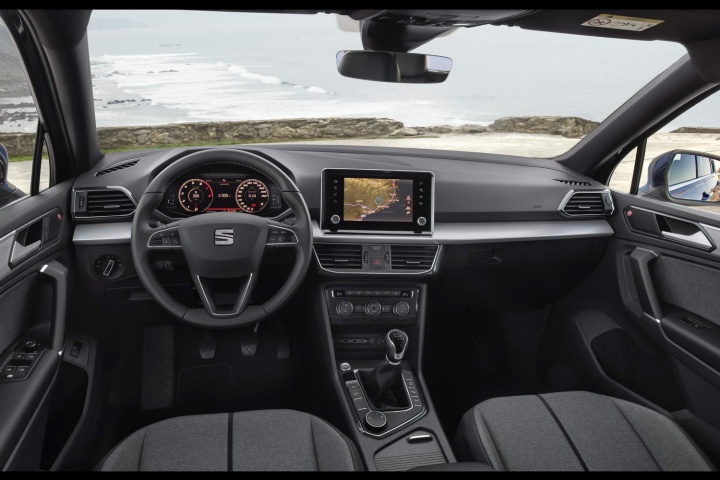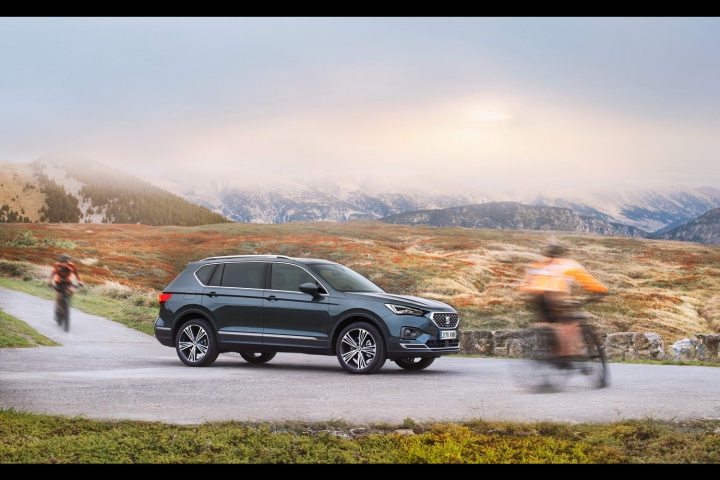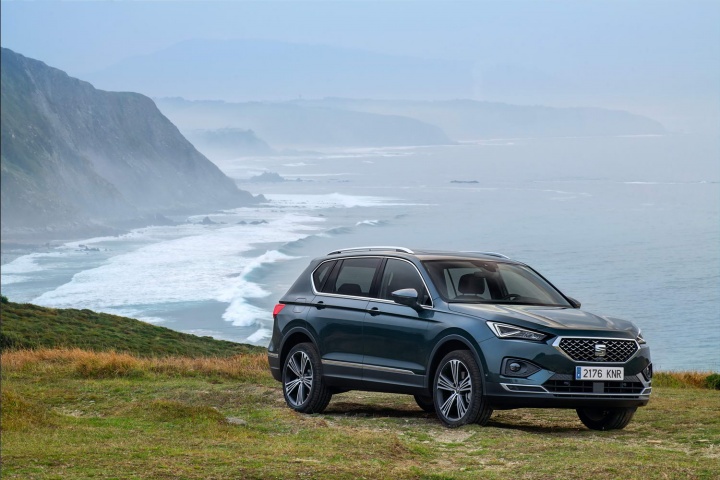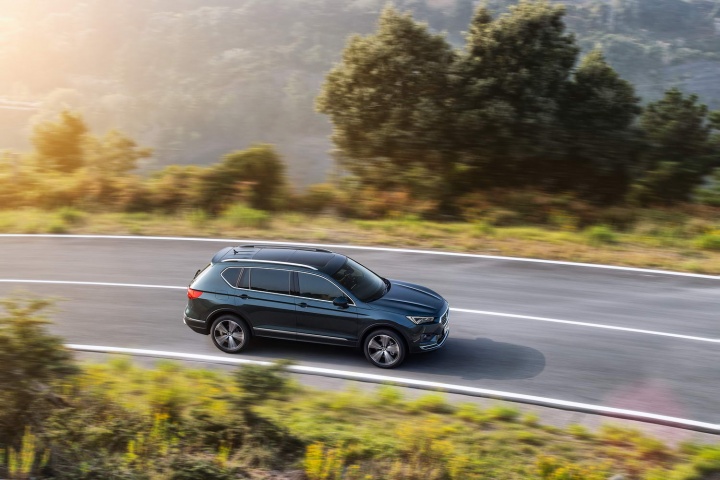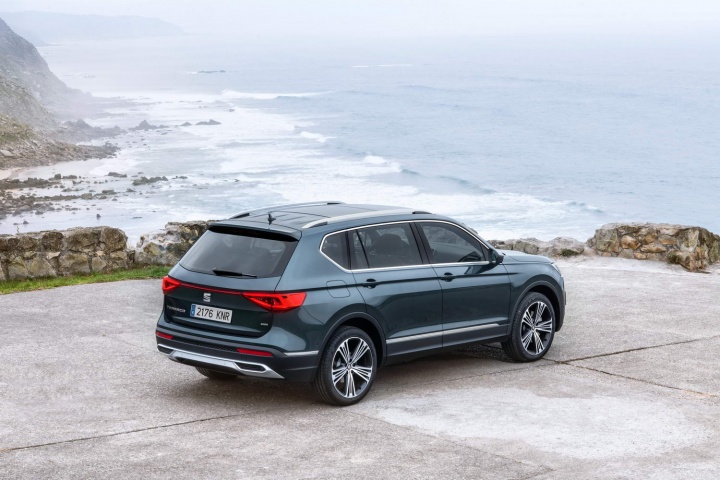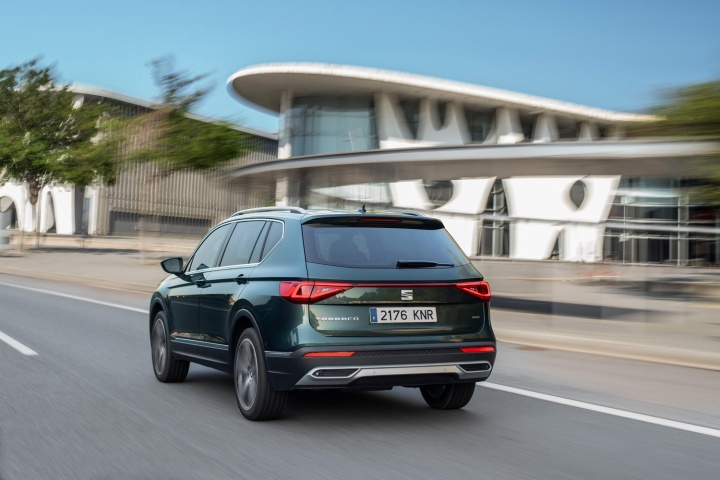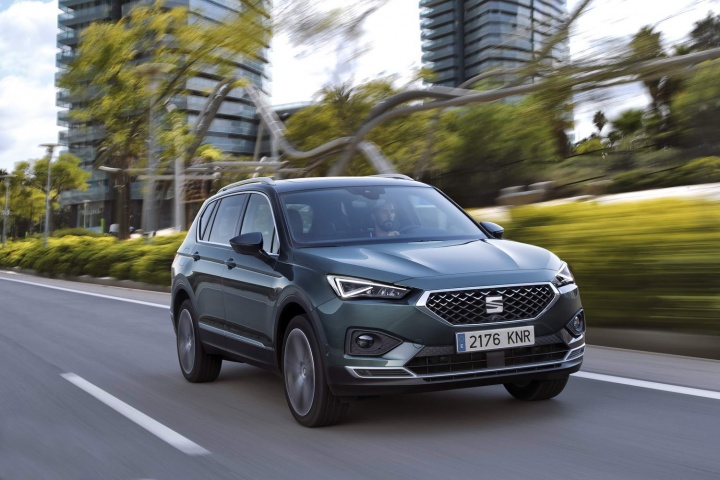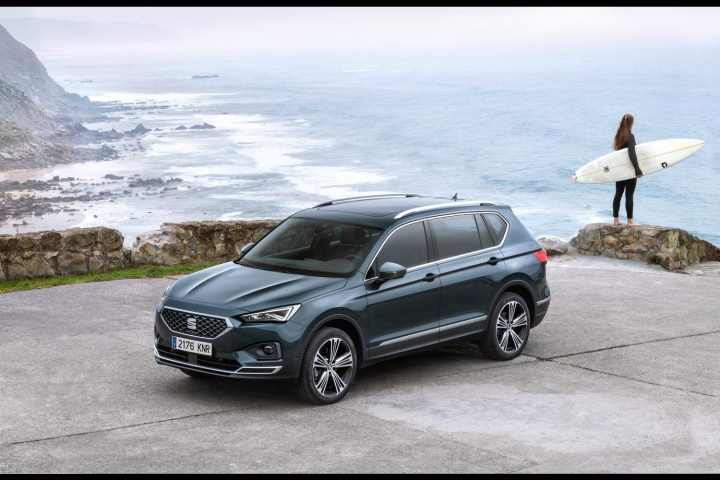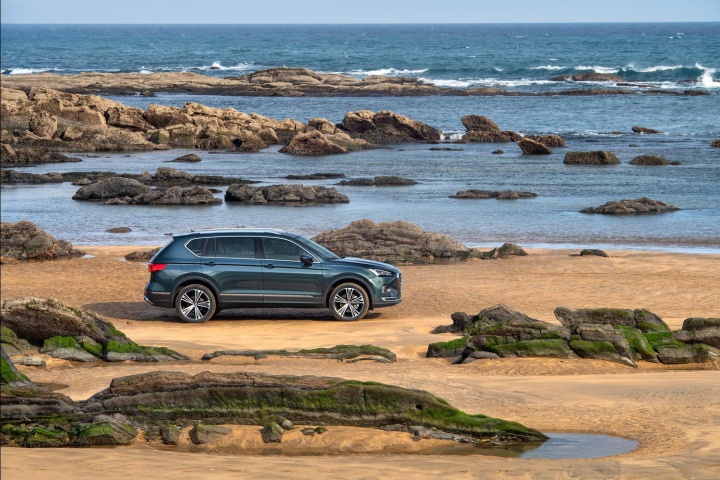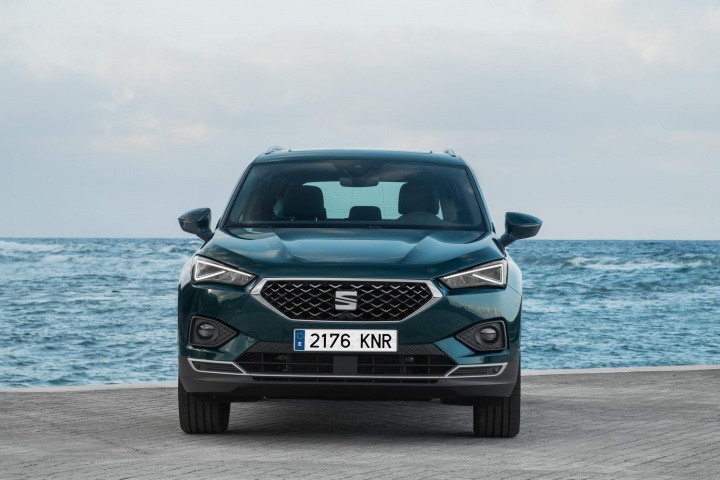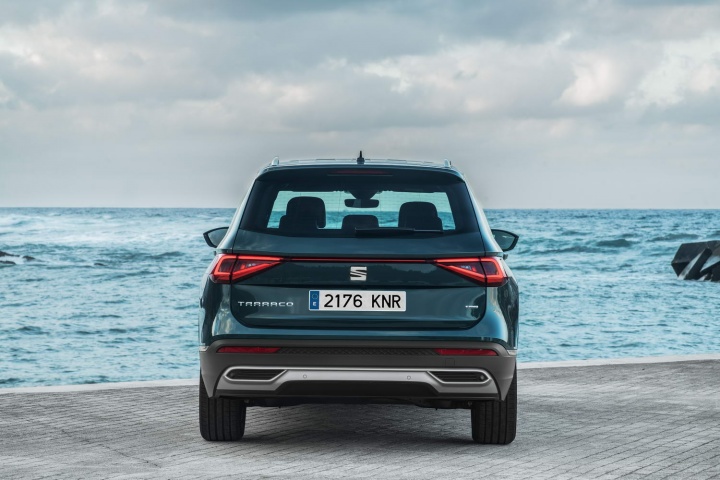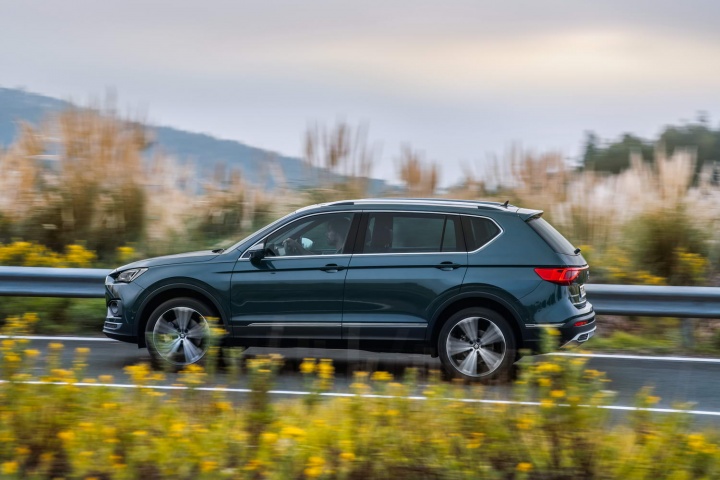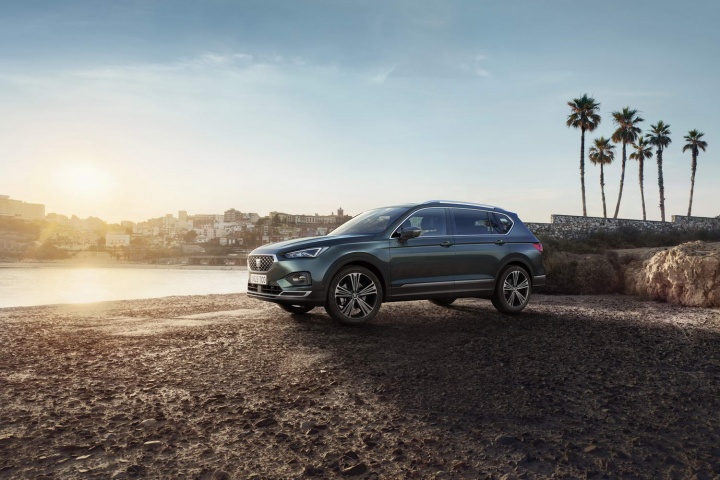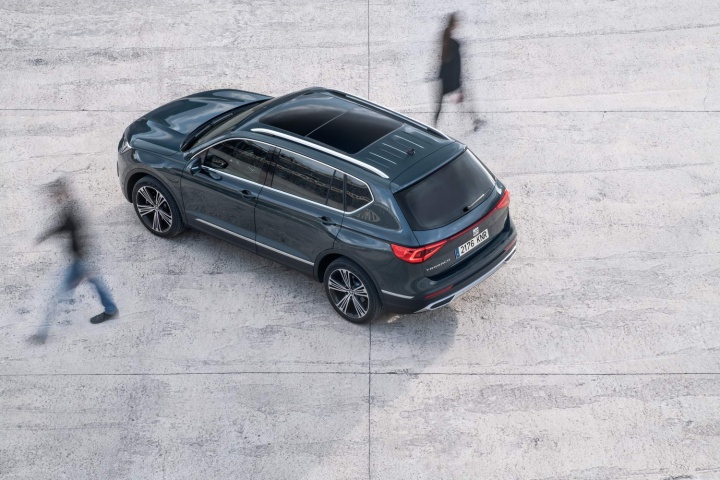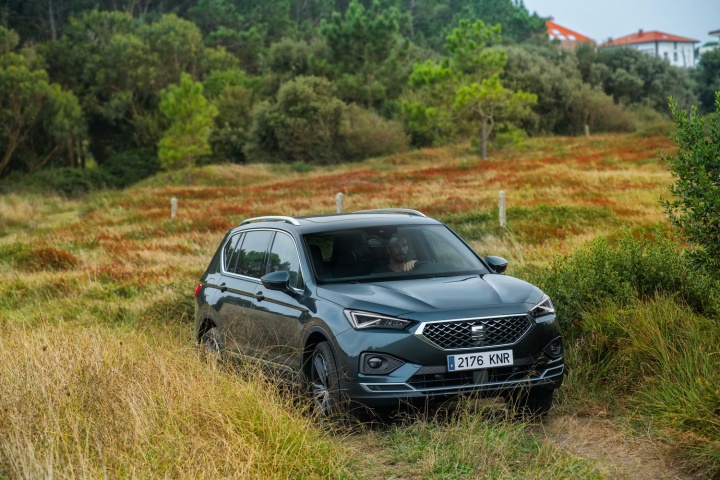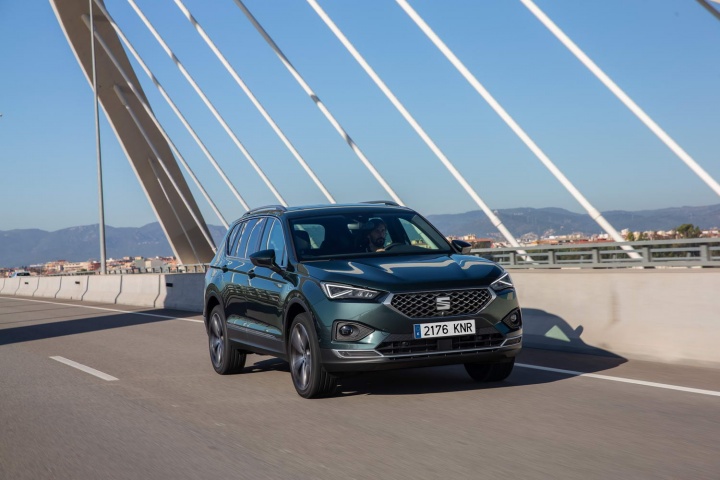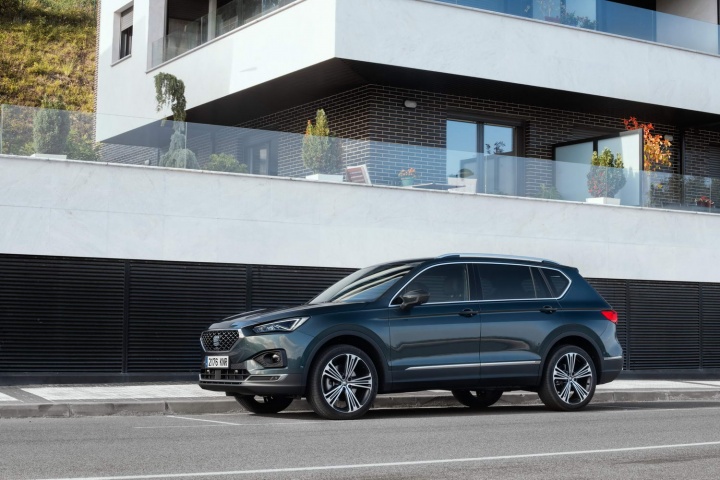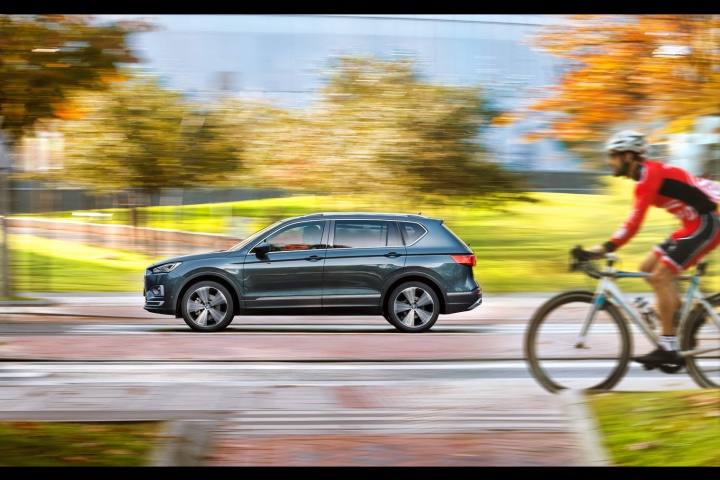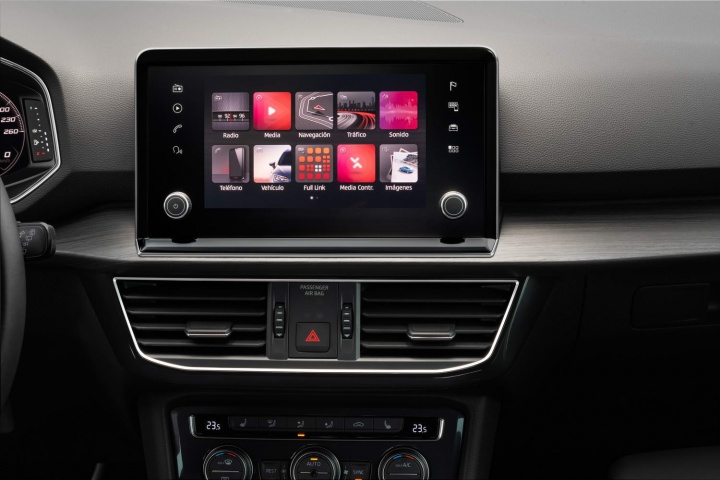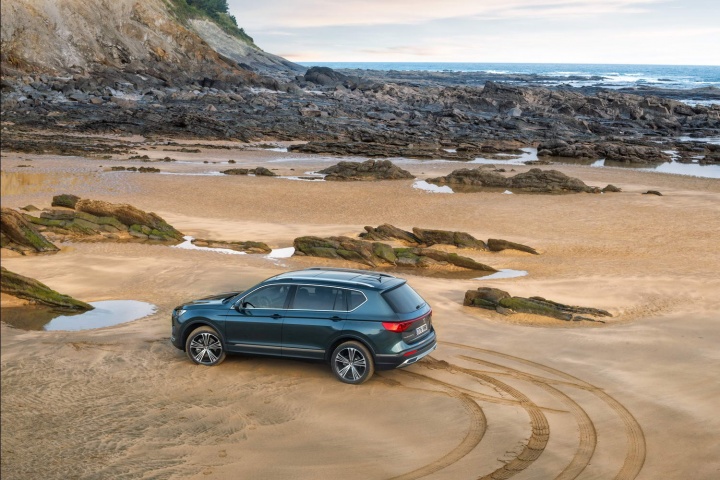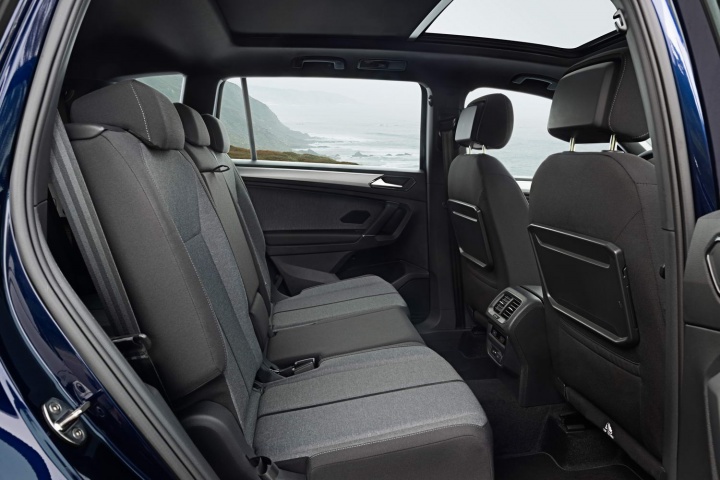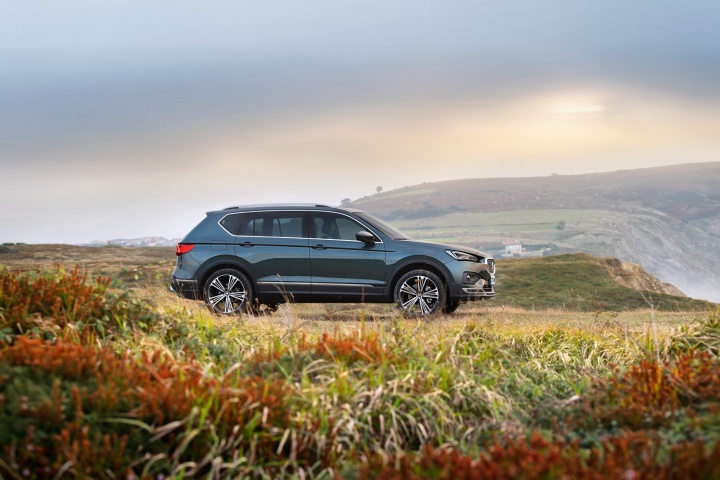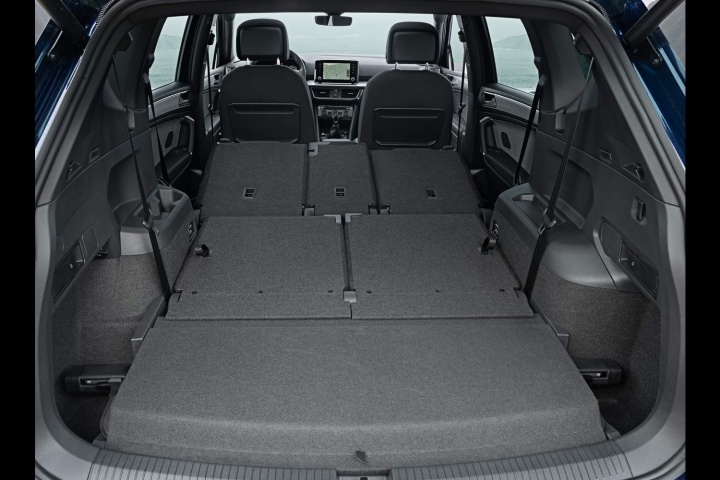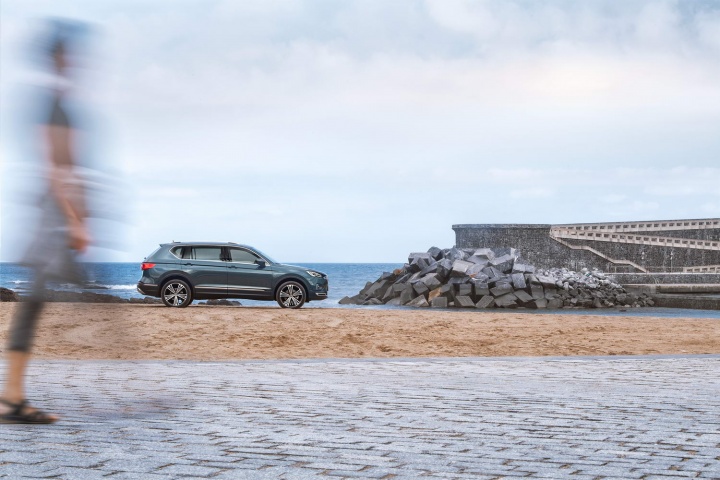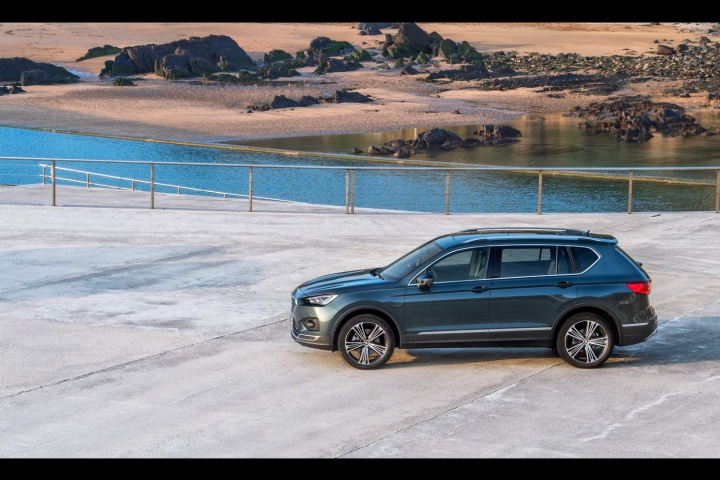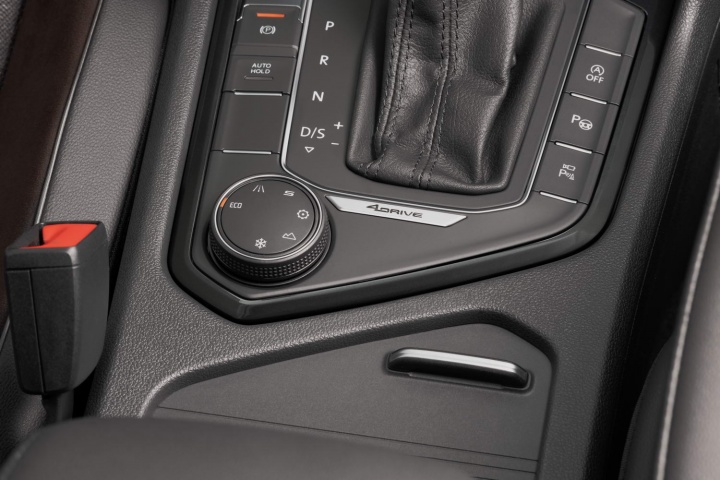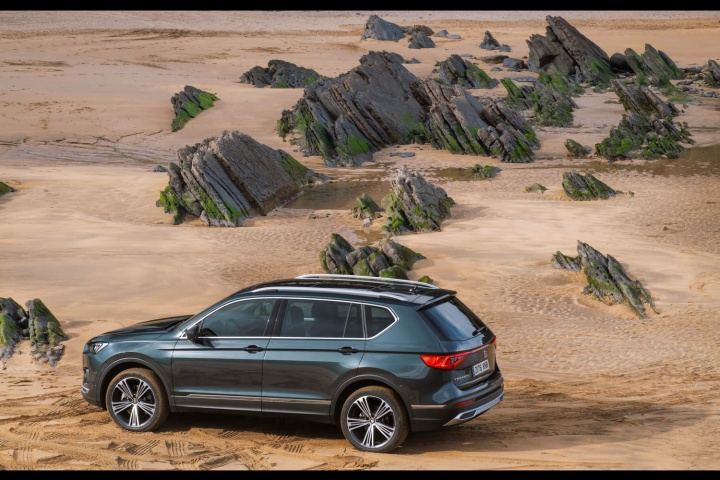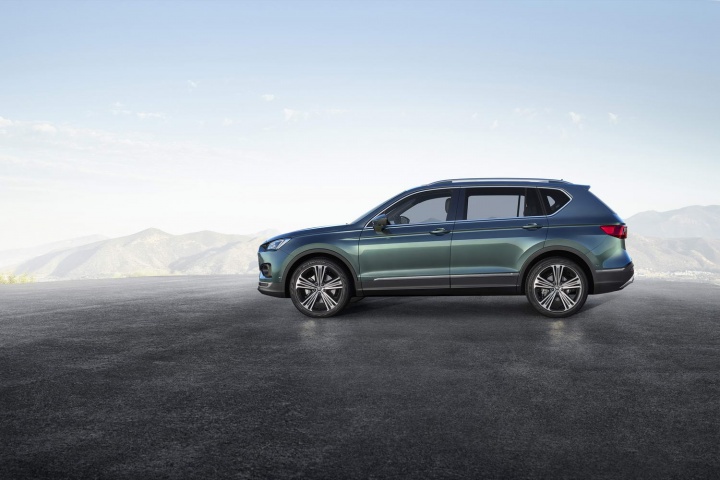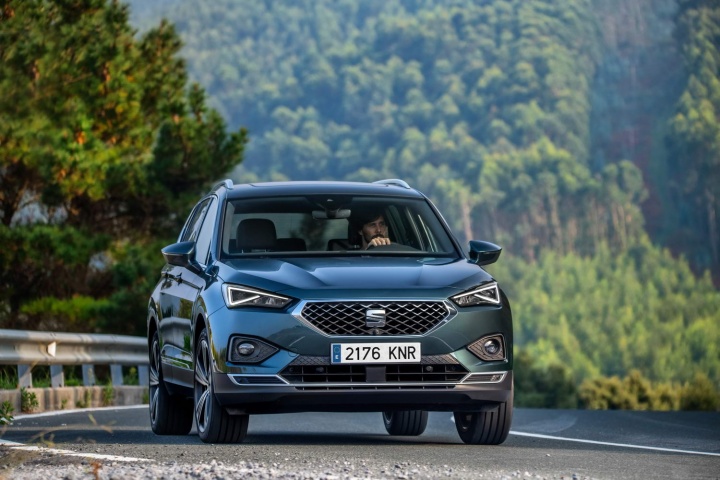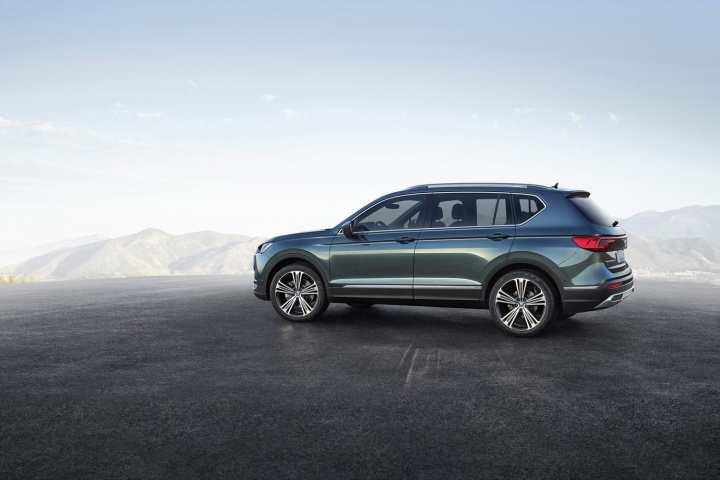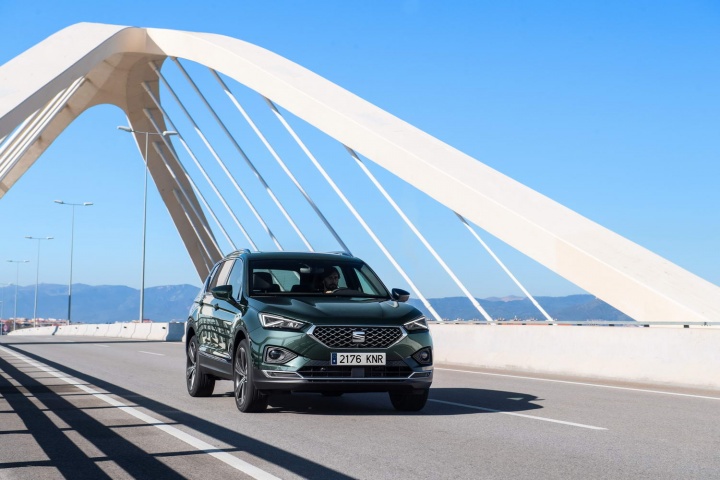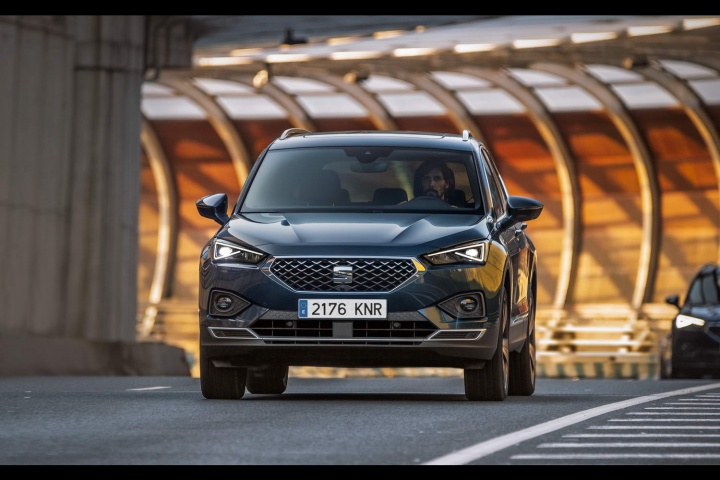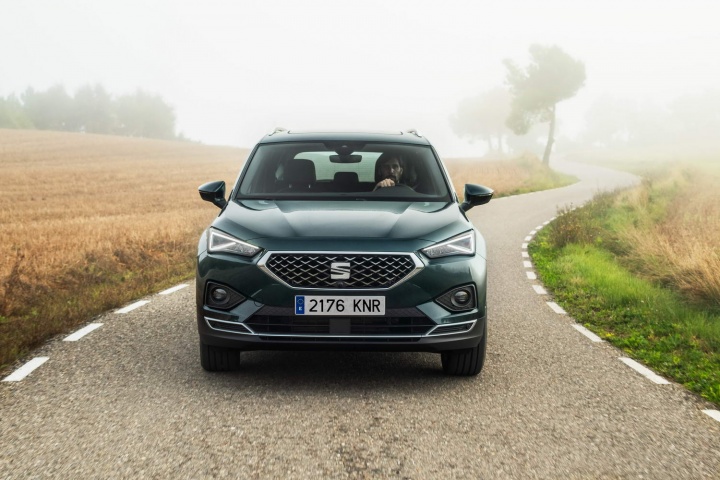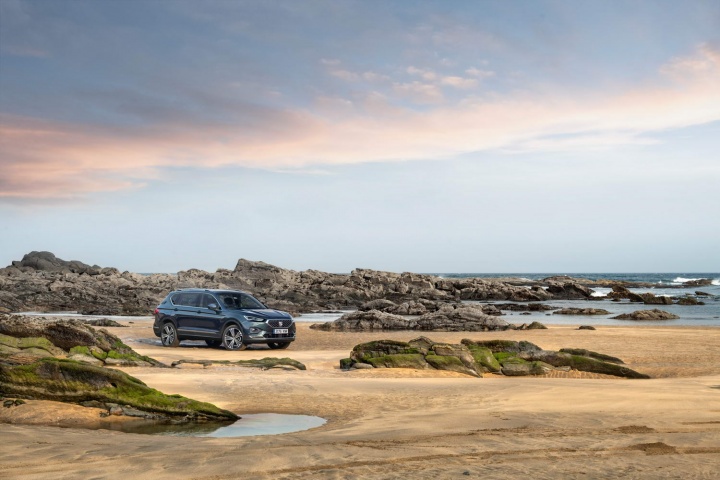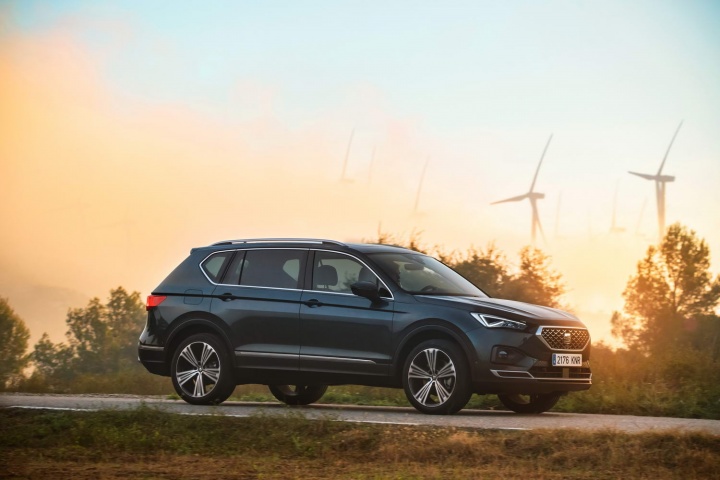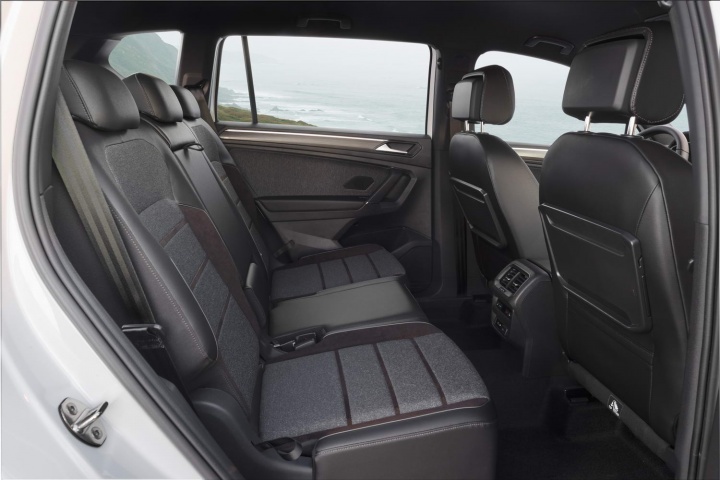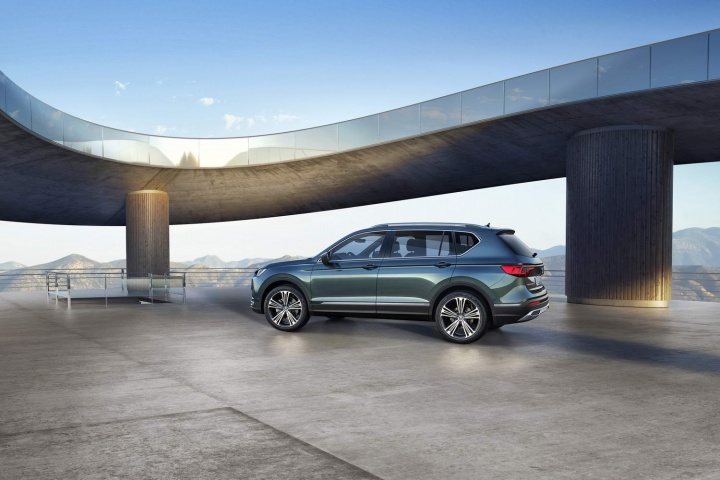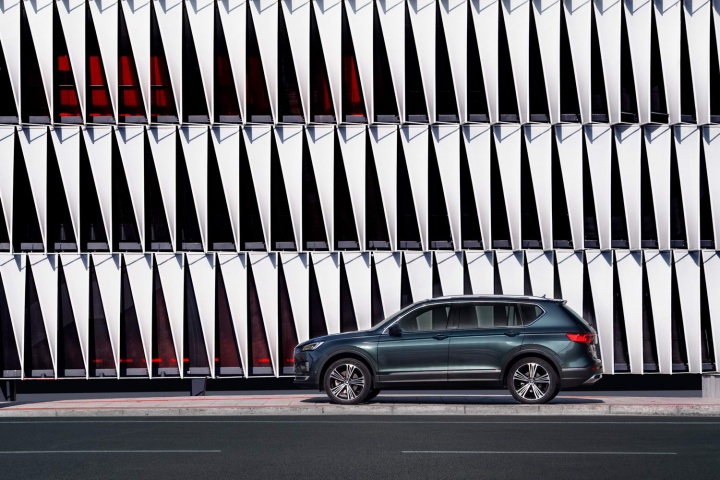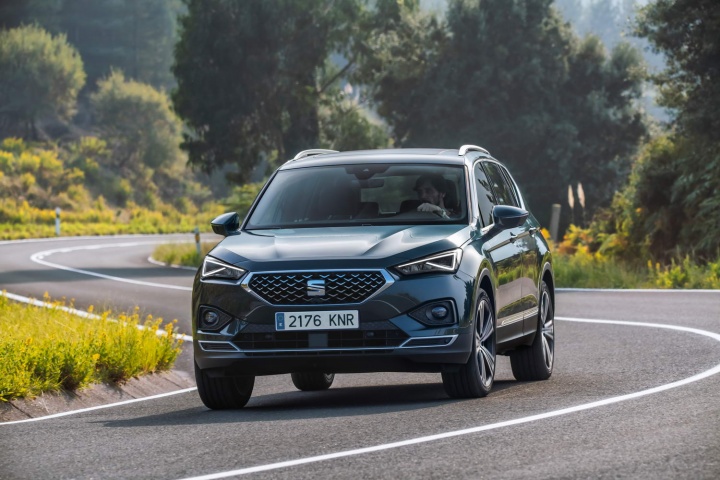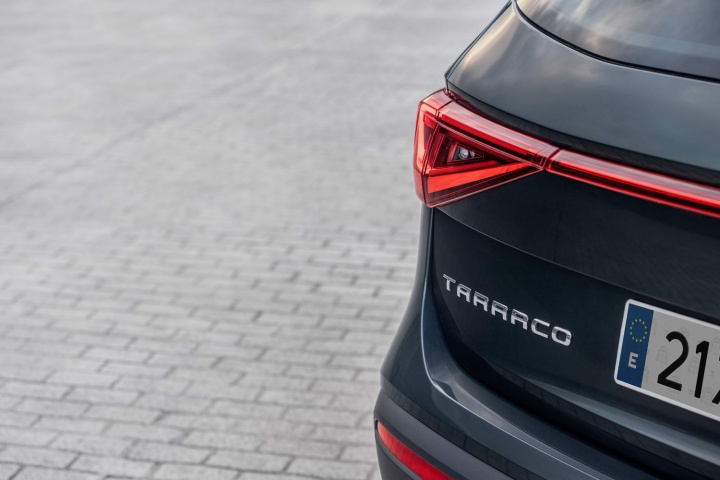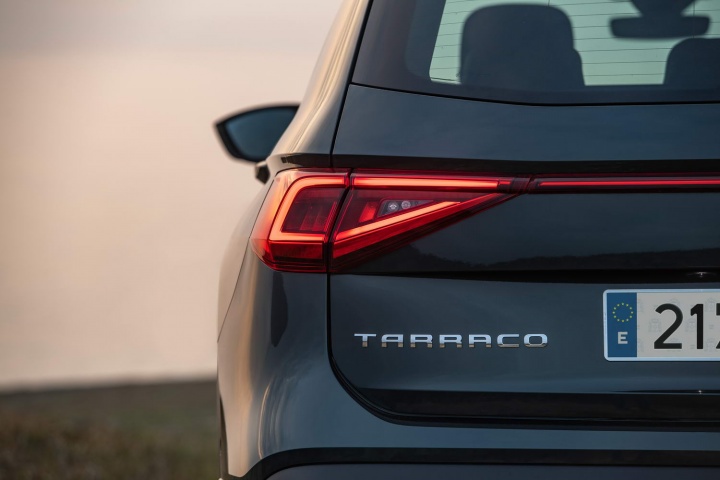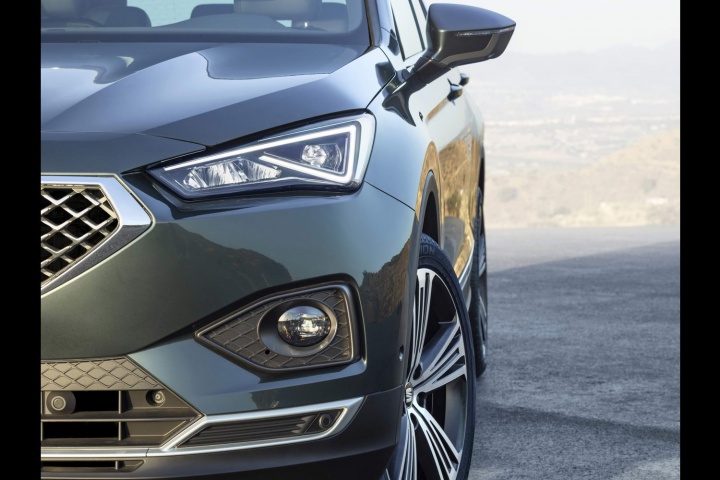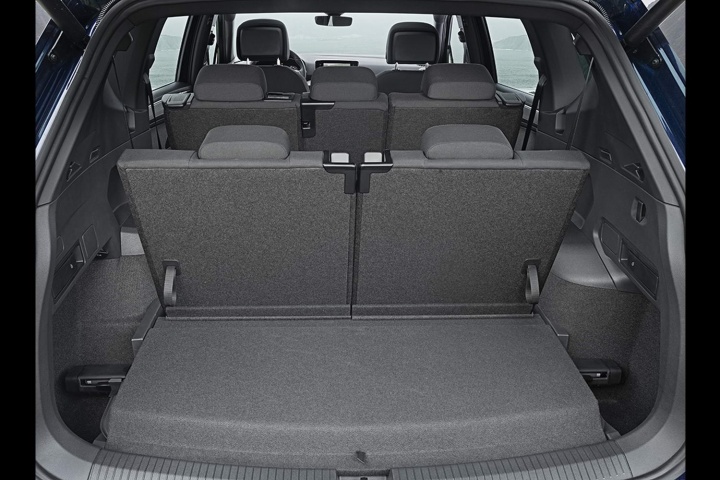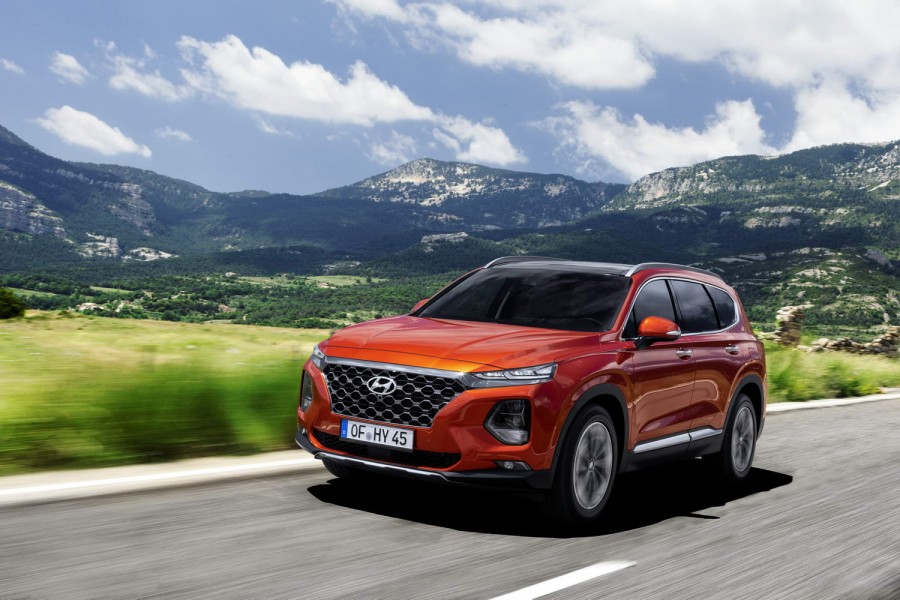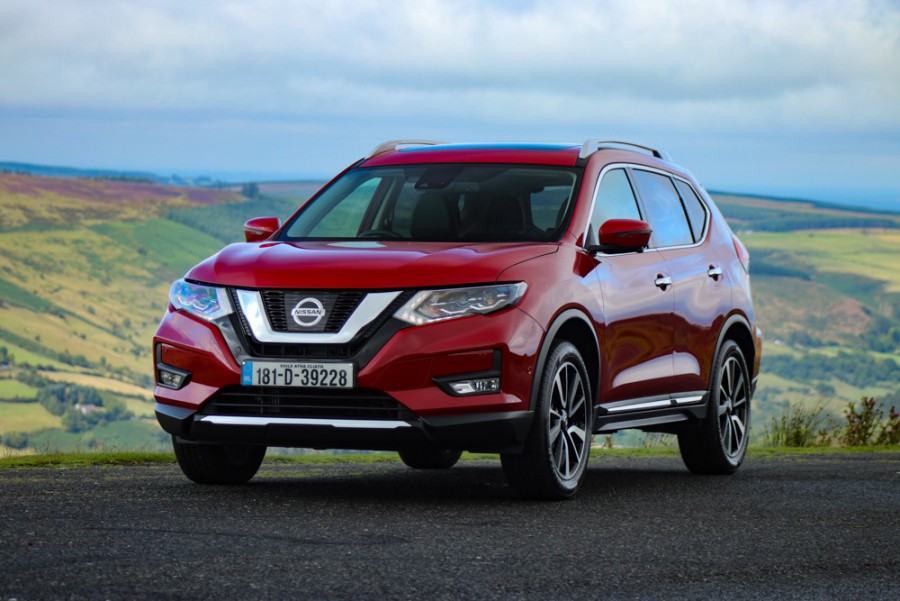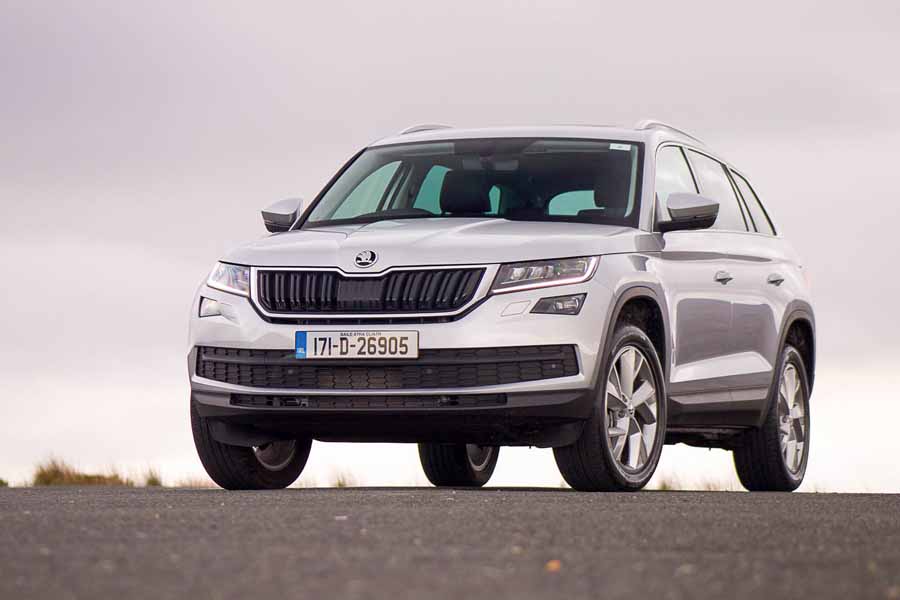Up until now, if you wanted a seven-seat SEAT, you had to buy an Alhambra. But MPVs are not exactly fashionable anymore, so SEAT has launched a much trendier people carrier in the form of the Tarraco SUV, which joins the Arona and Ateca to crown SEAT's SUV range. Its main rivals will be the likes of the Hyundai Santa Fe, Kia Sorento, Nissan X-Trail, Renault Koleos and its close relation, the Skoda Kodiaq.
In the metal
The SEAT Tarraco is a sharp looking machine, from the front. Around the back, it's a bit Kardashian-like from certain angles. However, this is to be expected as the Tarraco, at 4,735mm, is a little longer than the Kodiaq (4,697mm) and Volkswagen Tiguan Allspace (4,701mm). However, it's not as tall as either of those models.
Despite the shared underpinnings, the Tarraco's styling shows a glimpse of the design language of future SEAT models. The roofline and sharp crease through the doors are similar to that of the Skoda Kodiaq, but the overall design of the Tarraco is more aggressive than that of the Arona and Ateca. There is a more prominent, upright grille and full LED headlights that retain SEAT's triangular signature, but they are now set further into the body giving a more focused appearance. Around the back there is an LED light bar that connects the two lights.
All the lights, both interior and exterior, use LED technology as standard on both the Xcellence and SE trim levels. Wheel sizes range from 17 to 20 inches in diameter and those larger wheels fill the arches rather nicely.
The cabin gets some nice-to-touch materials, but I'm not sold on the faux wooden dash trim. What I do like is the large eight-inch touchscreen infotainment display, which is placed high up on the dash, meaning it is safer to use as you take your eyes off the road less when operating it. The steering wheel is also a really good size and you can clearly see the 10.25-inch digital cockpit instrument panel through the wheel. Both displays are big and bright with crisp graphics and they're easy to use. However, I don't think the 'floating' style of screen is as aesthetically pleasing as the more integrated ones. What is pleasing, however, are the big comfy seats and the decent amounts of storage, along with decent leg- and head room all around. Visibility is also good and, if you opt for the panoramic sunroof, the cabin is flooded with loads of light making it feel extra spacious and bright.
In terms of boot space, five-seat versions of the Tarraco hold 760 litres with the rear seats in place and 2,000 litres with the rear seats folded flat. The second row of seats slide and recline as standard. The seven-seat model's boot can hold 230 litres at a minimum, rising to 700 litres with the two rearmost seats folded. As a comparison, the Skoda Kodiaq can hold 720-2,065 litres in five-seat guise and the seven-seat version can hold 270 litres in five-seat configuration or 630 litres with the rear seats tumbled. This puts the SEAT slightly behind the Skoda in terms of boot capacity.
Driving it
The SEAT Tarraco is built on the Volkswagen Group's MQB-A platform, which is also used by the Audi Q2, SEAT Arona and Ateca, Skoda Karoq and Kodiaq, and the Volkswagen T-Roc and Tiguan. However, SEAT says that it has tuned and refined the chassis to make it stand out from the other models.
On the road, it feels well-balanced and the steering accurate, if a little light. Along twisty sections of road, the Tarraco is sure-footed and capable - there's even a Sport mode to sharpen things up a bit. There are other drive modes to choose from including Eco, Normal, Off-road and Winter, but, as much as SEAT is pushing the marketing spiel that this is a dynamic SUV, it is, at the end of the day, a large, high-sided seven-seater, and sporty it isn't. Having said that, despite its size, body lean is well contained, and it does feel a bit more sorted than the Kodiaq. That's likely to be down to the fact that the Tarraco rides some 20mm lower.
Out on the motorway, it is a comfortable cruiser with a quite well insulated cabin and little road or wind noise permeating. The slick seven-speed DSG transmission adds to the refinement as gear changes are smooth and effortless. The 190hp 2.0-litre diesel engine has plenty of power, but if you don't need four-wheel-drive traction, the 150hp version should also be adequate, will be cheaper to buy and run thanks to lower emissions and better fuel economy.
What you get for your money
The Tarraco can be had with five or seven seats and SEAT reckons most buyers will go for the seven-seater. However, unlike the Alhambra, this is not really a full-time seven-seater; more of a five-seat SUV with two additional seats in the boot.
Standard safety technology includes Lane Assist and Front Assist including bicycle and pedestrian detection, Emergency Call, Pre-crash Assist and Rollover Detection. Optional safety equipment includes Adaptive Cruise Control (standard on Xcellence trim), Blind Spot Detection, Emergency Assist, Light Assist and Traffic Jam Assist.
The engine options include two petrol units and two diesels. The petrol variants are a four-cylinder 1.5-litre TSI engine that produces 150hp, paired with a six-speed manual gearbox powering the front wheels, and a 2.0-litre unit that produces 190hp, mated to a seven-speed DSG automatic and 4Drive all-wheel drive.
The diesel options are a 2.0-litre TDI unit that produces 150hp (which can be had with a six-speed manual and front-wheel drive, or a seven-speed DSG with 4Drive) and a 190hp 2.0-litre TDI option paired with a seven-speed DSG with 4Drive transmission.
Later, the SEAT Tarraco will also get a plug-in hybrid powertrain option.
Summary
The SEAT Tarraco has decent dynamics for an SUV of this size and offers well-balanced handling and a comfortable ride. It has an attractive cabin, good seats and plenty of room for all passengers. However, the same could also be said of the Skoda Kodiaq, which pips the SEAT in terms of boot capacity and family-friendly features. What this will come down to is price and SEAT will have to be very competitive in order to steal buyers away from King Kodiaq. No doubt its sharp looks, tech and connectivity options will help it do just that.

